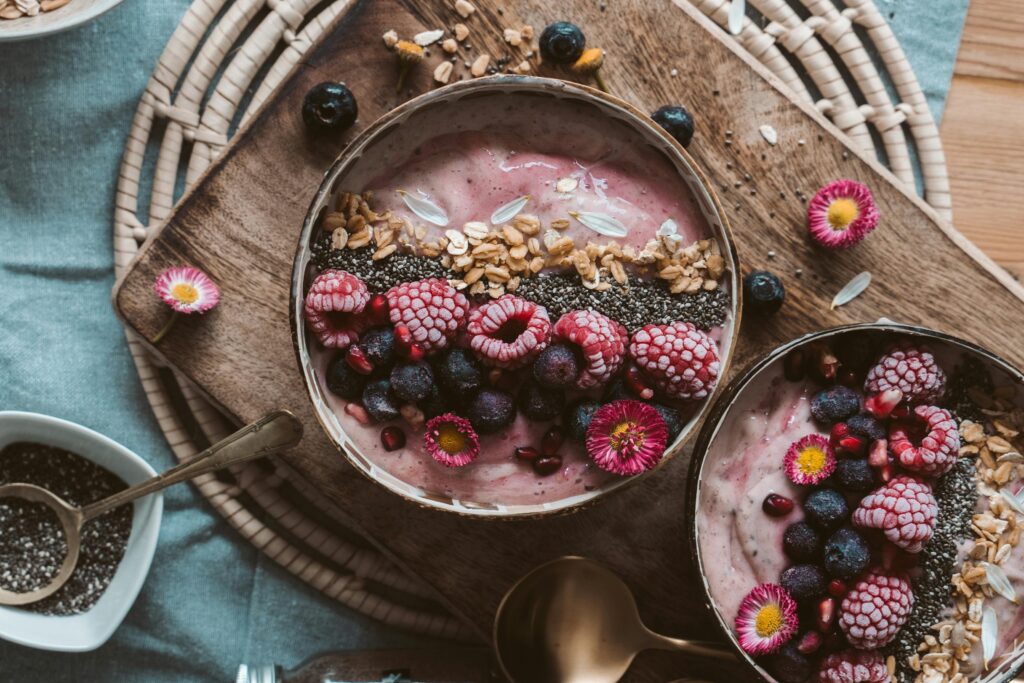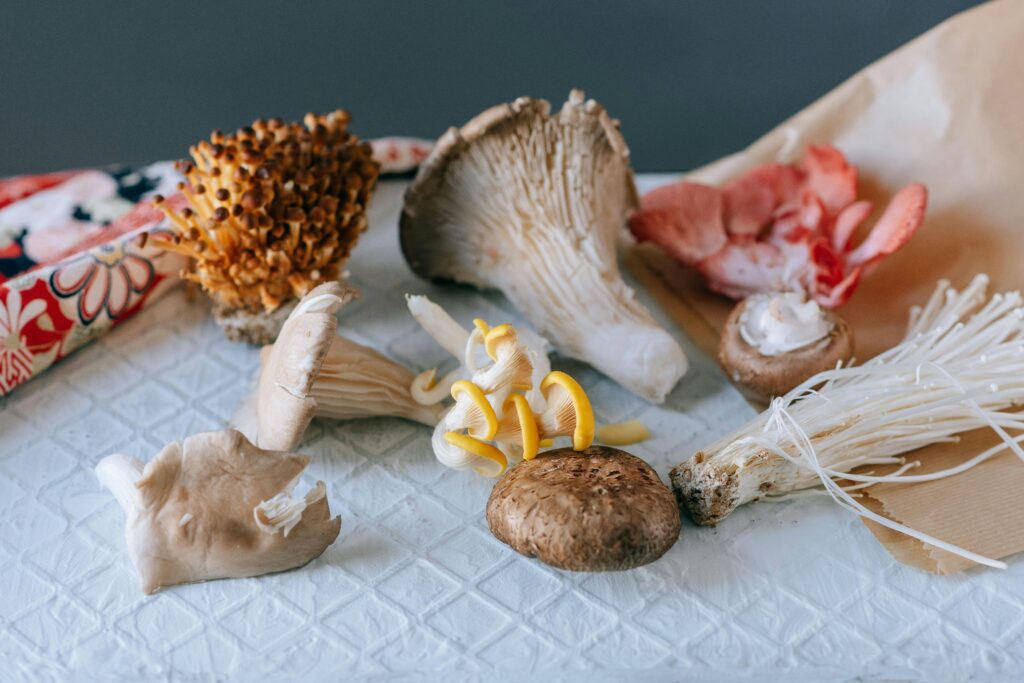Weeknight dinners can feel like a juggling act when you are trying to lose weight. You want meals that taste good and still support your goals. You also need them to be quick enough to cook after a long day. Over the past year I tested simple dinners that fit into a busy routine without blowing the calorie budget. I tracked portions, cooking time, and how full I felt two hours later. What follows are the keepers that I return to again and again. They balance protein, fiber, and flavor so you do not feel like you are on a diet at all.

Why Simple Dinners Work For Sustainable Weight Loss
Satiety and calorie control in real life
Protein and fiber help you stay full with fewer calories. In my own log, meals with at least 25 grams of protein with a single cup of high fiber vegetables kept late night snacking in check. The CDC and several university nutrition programs note that high volume foods like leafy greens and broth based dishes can reduce overall calorie intake by adding bulk for very few calories. That is the quiet secret behind a lot of weight loss dinners that actually work.
The role of repeatable routines
Dinner is where plans often fail because energy is low and decisions pile up. A small rotation of reliable recipes removes friction. I keep three base patterns ready. One sheet pan meal. One skillet meal. One bowl meal. Each has a protein, a fiber rich vegetable, and a flavor accent like a sauce or herb. With that framework I shop faster and cook faster. It is not glamorous but it is what gets results.
Budget and time constraints are part of the plan
Healthy dinners do not need premium ingredients. Canned beans, frozen vegetables, and store brand yogurt form the backbone of many of my meals. Nielsen and USDA data show that frozen vegetables are as nutritious as fresh in most cases and they reduce waste. When time and money are tight you do not need to compromise your goals. You just need a plan that respects the limits you face.
Core Principles For Building Light Yet Satisfying Dinners
Protein first without the fuss
Aim for a palm sized portion of lean protein. Chicken breast, extra firm tofu, tuna, shrimp, turkey, or lean beef work well. I batch cook chicken and tofu on Sundays with a simple salt and pepper rub. That way weeknight dinners start halfway done. Most dinners improve when protein is already cooked and ready to reheat gently with a sauce.
Fiber and color on half the plate
Fill half your plate with vegetables. Roast, steam, or saute them with a small amount of olive oil and salt. I rotate broccoli, green beans, bell peppers, zucchini, mushrooms, and leafy greens. This adds volume, texture, and micronutrients that support energy and mood during a cut. It also makes the plate look generous so your brain feels satisfied.
Flavor accents keep cravings in check
Sauces and herbs matter. A spoon of pesto, a squeeze of lemon, or a yogurt based dressing can lift basic ingredients into something you want to eat. I keep a few low sugar sauces in the fridge and fresh herbs on the windowsill. When food tastes good you do not feel deprived. That is a quiet win that shows up on the scale over time.
Sheet Pan Dinners That Practically Cook Themselves
Lemon garlic chicken with broccoli and potatoes
Toss bite sized chicken breast, broccoli florets, and small diced gold potatoes with olive oil, minced garlic, salt, pepper, and lemon zest. Roast on a hot sheet pan until the chicken is done and the edges are crisp. I finish with a squeeze of lemon and chopped parsley. One pan. Minimal cleanup. A balanced plate that hits protein, fiber, and smart carbs.
Chili lime shrimp with peppers and onions
Shrimp cook in minutes and make weeknights feel easy. I mix shrimp with chili powder, lime juice, and a bit of olive oil. On the pan I scatter sliced bell peppers and onions. Roast just until the shrimp curl and turn pink. Serve with a light avocado yogurt sauce if you want extra creaminess. It tastes like a taco night without the heaviness.
Tofu and veggie miso glaze
Extra firm tofu gets tossed with a miso soy glaze and roasted with mushrooms, snap peas, and carrots. The glaze gives savory depth while the vegetables bring crunch and color. Now you would like to add sesame seeds and scallions at the end. It is a plant forward dinner that still delivers solid protein.
Skillet Dinners Ready In Under 20 Minutes
Turkey zucchini skillet with tomatoes
Brown lean ground turkey with onion and garlic. Add diced zucchini and a can of no salt tomatoes. Simmer five minutes and finish with basil and a spoon of grated parmesan. It is cozy and bright at the same time. I eat it as is or spoon it over riced cauliflower when I want more volume.
Searing salmon with spinach and lemon yogurt
A hot skillet and a little oil are all you need for a crisp salmon fillet. Once the salmon is seared, wilt a pile of spinach in the same pan with a squeeze of lemon. Stir together Greek yogurt, lemon, and dill for a fast sauce. The whole plate looks restaurant ready and still fits a calorie deficit.
Black bean and corn saute with eggs
Alright so first of all heat a skillet with a bit of olive oil. Add rinsed black beans, corn, diced bell pepper, and cumin. Warm through and top with two fried or poached eggs. The yolk becomes the sauce. It is cheap, fast, and filling with a nice balance of protein and fiber.
Bowl Meals That Feel Like Comfort Food
Chicken burrito bowl makeover
Use cooked chicken breast, cauliflower rice, black beans, pico de gallo, and a in a few amount of shredded lettuce. Add a spoon of salsa and a dollop of Greek yogurt instead of sour cream. You get the spirit of a burrito with a fraction of the calories and a lot more protein and fiber.
Soba noodle veggie bowl with edamame
Cook soba noodles and toss with steamed edamame, shredded carrots, cucumber, and a light soy ginger dressing. The noodles bring comfort while the edamame boosts protein. If you need fewer carbs, swap half the soba with spiralized zucchini. It still tastes complete.
Warm lentil bowl with roasted veggies and feta
Cooked lentils meet roasted cauliflower, cherry tomatoes, and red onion. You can no add a little feta and drizzle of olive oil and with some red wine vinegar pull it together. It is earthy, bright, and satisfying. Lentils are a budget friendly protein that also carry plenty of fiber.
Planning Tips That Keep You On Track
Portioning without strict rules
I plate dinners with a simple guide. Half vegetables. A quarter protein. A quarter smart carbs like potatoes, brown rice, or beans. If I am more active that day I nudge the carb portion up. If I sat a lot I lean more on vegetables. This flexible approach beats rigid numbers for most busy people.
Smart swaps that save calories
Greek yogurt stands in for sour cream. Cauliflower rice mixes with regular rice for volume. Lean ground turkey replaces higher fat beef in most recipes. Air frying or roasting replaces deep frying. Over time these swaps add up without making dinner feel like a chore.
Leftovers are your weekday ally
I cook one extra serving at dinner and pack it for the next day. That habit alone cut my takeout orders by half during a busy month. When healthy food is the easiest option, you win by default. A good container set is a better investment than another diet book.
Balanced View On Weight Loss Dinners
What recipes cannot do
No dinner can fix chronic stress or lack of sleep. In my experience, nights with less than six hours of sleep led to stronger cravings the next day. Research from major sleep labs backs this up. Food choices matter. But they sit inside a bigger picture that includes movement, stress, and rest.
The risk of cutting too low
Very low calorie dinners can backfire with rebound snacking. I tested a phase with ultra light soups and found my total daily intake went up because I kept grazing. Moderation wins. Add enough protein and fiber so dinner carries you to bedtime without a snack attack.
When to get professional help
In case you have a certain medical condition or significant weight to lose, a registered dietitian can tailor a plan to your needs. They can help you adjust macros, manage medications, and avoid nutrient gaps. It is worth the investment if you want a plan that fits your life and your health history.
My Go To Easy Dinner Recipes With Practical Details
Garlic herb chicken with roasted vegetables
I marinate chicken breast in olive oil, lemon, garlic, and Italian herbs for 20 minutes. Roast at high heat with a mix of broccoli, carrots, and onions. It delivers about 30 grams of protein per serving with high volume vegetables. The flavor stays bright and the cleanup is simple.
Quick tofu stir fry with ginger soy
Press tofu for a few minutes to remove water. Stir fry with ginger, garlic, and a splash of low sodium soy sauce. You cab add a bag of frozen stir fry vegetables and a small handful of cashews. Serve over cauliflower rice or a small scoop of brown rice. It is fast, balanced, and budget friendly.
Shrimp and vegetable bake with tomatoes
Layer cherry tomatoes, sliced zucchini, and shrimp in a baking dish. Season with olive oil, garlic, paprika, and salt. Now bake until the shrimp are just cooked and the tomatoes burst. Finish with chopped basil. The juices make their own light sauce.
Case Studies From My Own Kitchen Log
Thirty day sheet pan rotation
I ran a simple experiment last spring. I ate a sheet pan dinner four nights a week for a month. Prep time stayed under 15 minutes. Average dinner calories hovered around 500. I lost three pounds without changing breakfast or lunch. Most importantly I felt steady and never stuffed.
Protein target challenge
For two weeks I aimed for at least 30 grams of protein at dinner. Cravings between dinner and bedtime dropped sharply. My step count even rose because I felt more energetic after eating. Protein can be a lever that moves several parts of the day in a better direction.
Budget swap test
I swapped premium fresh vegetables for mostly frozen options and saved about 20 percent on the grocery bill. There was no drop in satisfaction or progress. That savings made the plan more durable for the long term.
Frequently Asked Questions
How many calories should dinner be for weight loss
For many adults a dinner in the 400 to 600 calorie range works when total daily intake is set for a modest deficit. Your needs vary by size, activity, and goals. A dietitian can help you set the right target.
Do I need to track macros for dinner
You do not have to. A simple plate method works. Protein about a quarter of the plate. Half vegetables. The rest for smart carbs and healthy fats. If you enjoy data you can track protein to hit a minimum of 25 to 35 grams.
Can I eat carbs at dinner and still lose weight
Yes. The key is portion and context. Pair carbs with protein and fiber. Choose whole grains, potatoes, beans, or squash over refined options. Many people sleep better with a modest amount of carbs at night.
Conclusion
Easy healthy dinners for weight loss do not need to be complicated or bland. Build them around protein and fiber. Use sauces and herbs to keep flavor high. Respect the limits of your time and budget by leaning on batch prep and frozen staples. Small routines compound into real results. When dinner supports your goals and your life you can keep going week after week.



